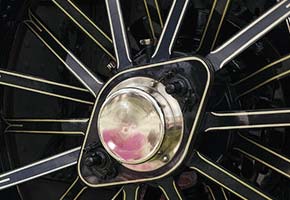Low-Power Analog-to-Digital ConverterA time-based (phase-based) Analog to Digital Converter (ADC) that is small, fast, and maintains a high level of accuracy. The NeedAnalog-to-digital conversion is carried out in a variety of computer and communications applications. Different types of analog-to-digital converters (ADCs) have been developed to convert an analog signal, such as voltage, to a digital signal with a value that corresponds to the magnitude of the analog signal. Current ADCs rely on analog components that face difficulties in scaling to nanometer feature sizes and are incompatible with low voltage devices. There is a need for smaller and faster ADCs that maintain a high level of accuracy. The TechnologyResearchers at The Ohio State University, led by Dr. YiQiao Lin, developed a novel phase-based sigma-delta ADC that employs clock time delay as the intermediary to convert analog voltage signal to digital bits. Two architectures were employed to demonstrate this ADC. Since the architectures are predominantly digital, it can be a highly desirable solution for low power nano-scale device design. These models offer both reference jitter shaping and quantization noise shaping:
Benefits/Advantages
|

Tech IDT2012-221 CollegeLicensing ManagerRandhawa, Davinder InventorsCategories(None) |
